Philodendrons are among the most versatile houseplants, offering both upright and climbing varieties. While self-heading Philodendrons grow in a structured, bushy form, climbing types develop long, trailing vines that thrive when given support like moss poles, trellises, or hanging baskets.
These vining Philodendrons bring a lush, cascading effect to indoor spaces, making them perfect for shelves, hanging planters, or vertical gardens. Below, we explore 15 of the most popular climbing Philodendron varieties, highlighting their unique traits and care requirements.
Contents
- 1 Types of Trailing and Climbing Philodendrons
- 1.1 1. Heartleaf Philodendron (Philodendron hederaceum)
- 1.2 2. Philodendron Brasil
- 1.3 3. Philodendron Micans
- 1.4 4. Philodendron Silver Sword (Philodendron hastatum)
- 1.5 5. Philodendron Brandtianum
- 1.6 6. Philodendron Mayoi
- 1.7 7. Philodendron Lemon Lime
- 1.8 8. Philodendron Pink Princess
- 1.9 9. Philodendron Red-Emerald
- 1.10 10. Philodendron Cordatum
- 1.11 11. Philodendron Green Emerald
- 1.12 12. Philodendron Painted Lady
- 1.13 13. Philodendron Bob Cee
- 1.14 14. Philodendron Lacerum
- 1.15 15. Philodendron Cream Splash
- 2 Care Tips for Climbing Philodendrons
- 3 How to Propagate Climbing Philodendrons
Types of Trailing and Climbing Philodendrons
1. Heartleaf Philodendron (Philodendron hederaceum)
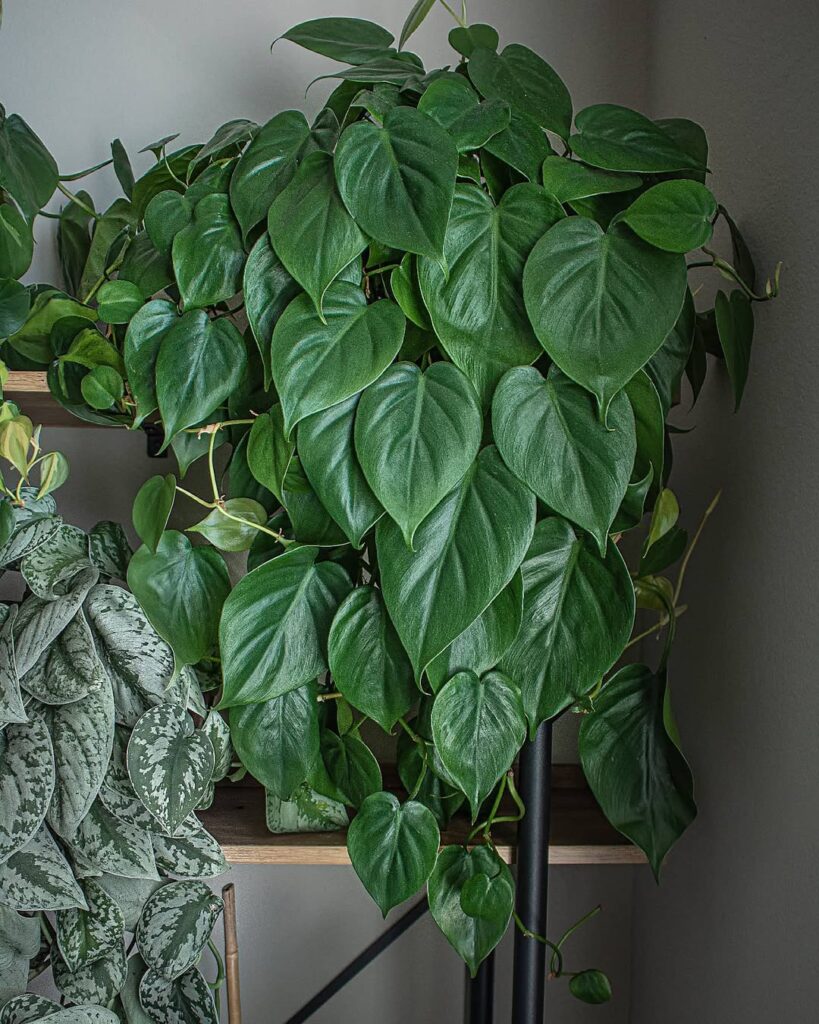

One of the most beloved trailing Philodendrons, the Heartleaf Philodendron features glossy, heart-shaped leaves that grow on long vines. It’s low-maintenance, thriving in various light conditions and adapting well to indoor environments.
- Light: Tolerates low to bright indirect light.
- Watering: Keep soil slightly moist but avoid overwatering.
- Growth Habit: Can grow 4–6 feet indoors, making it ideal for hanging baskets.
2. Philodendron Brasil
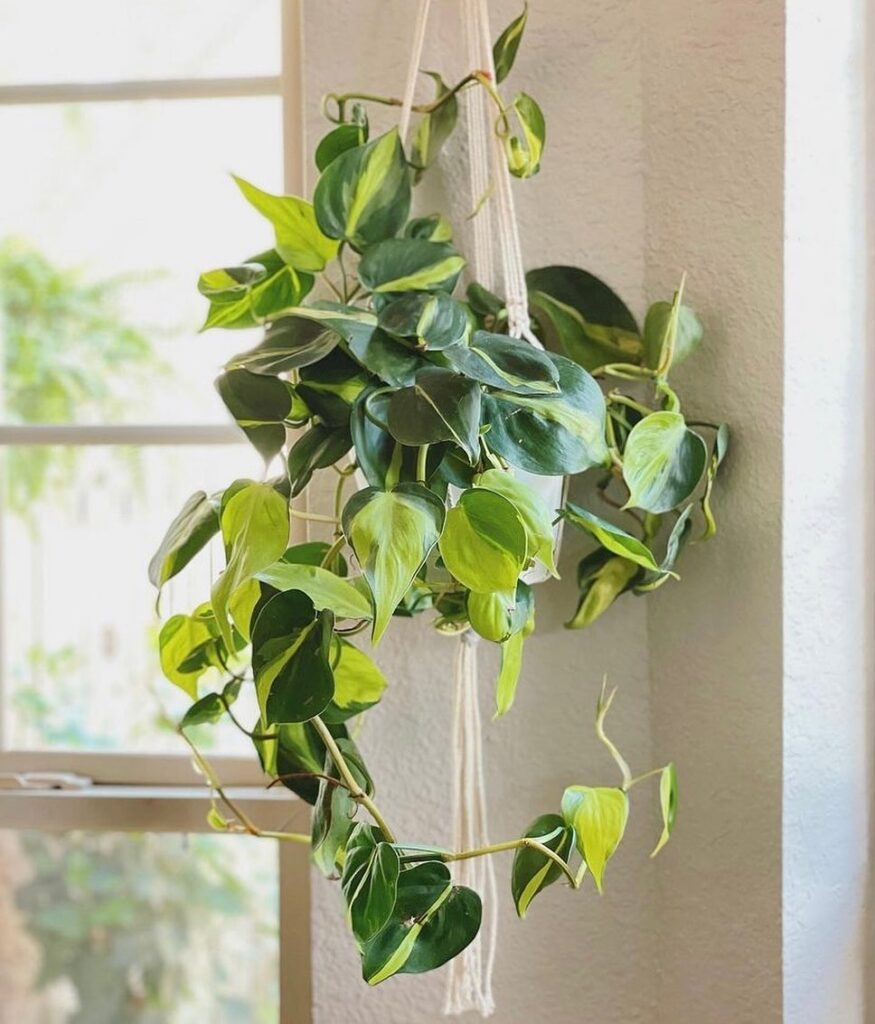
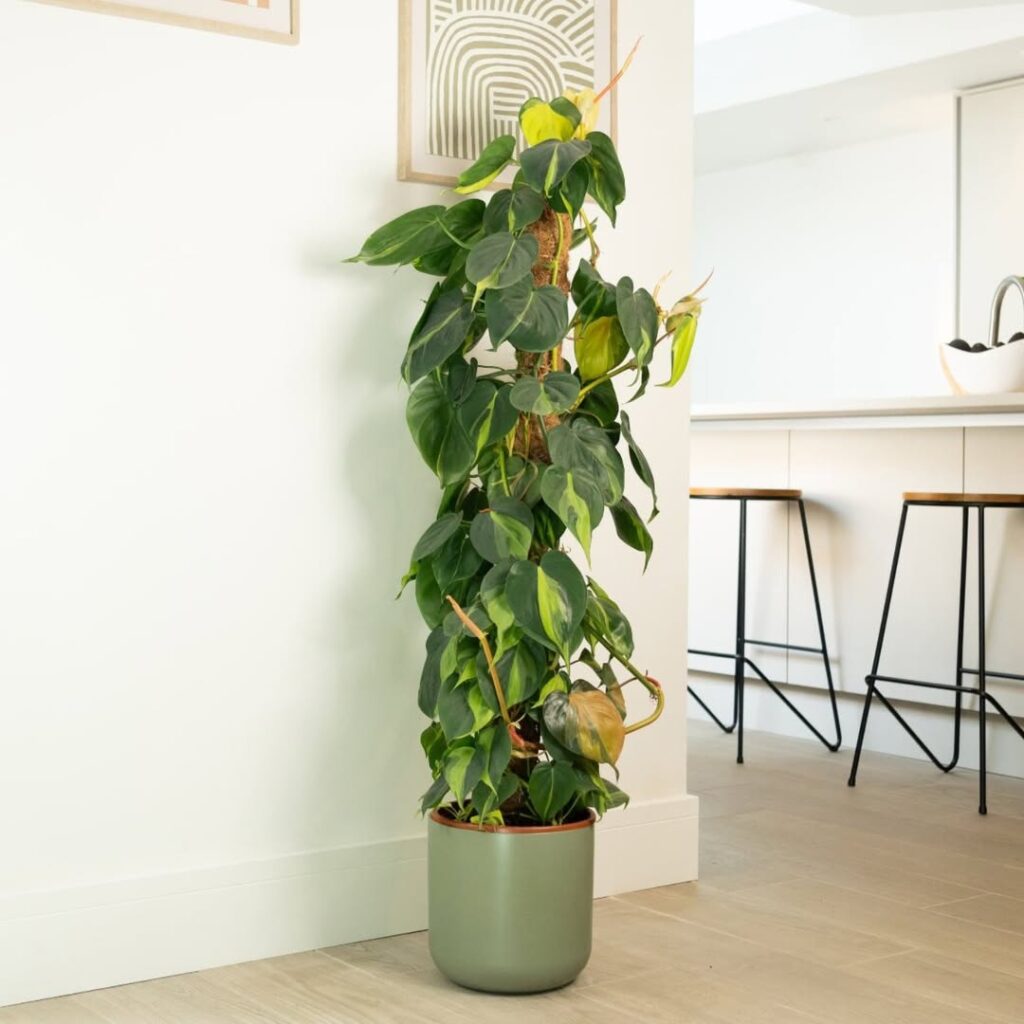
A stunning variegated cultivar of the Heartleaf Philodendron, Brasil boasts lime-green and yellow streaks across its foliage. It’s a fast grower, trailing beautifully over shelves or climbing up supports.
- Light: Prefers bright indirect light to maintain variegation.
- Watering: Allow the top inch of soil to dry between waterings.
- Growth Habit: Vigorous trailing growth, reaching several feet indoors.
3. Philodendron Micans
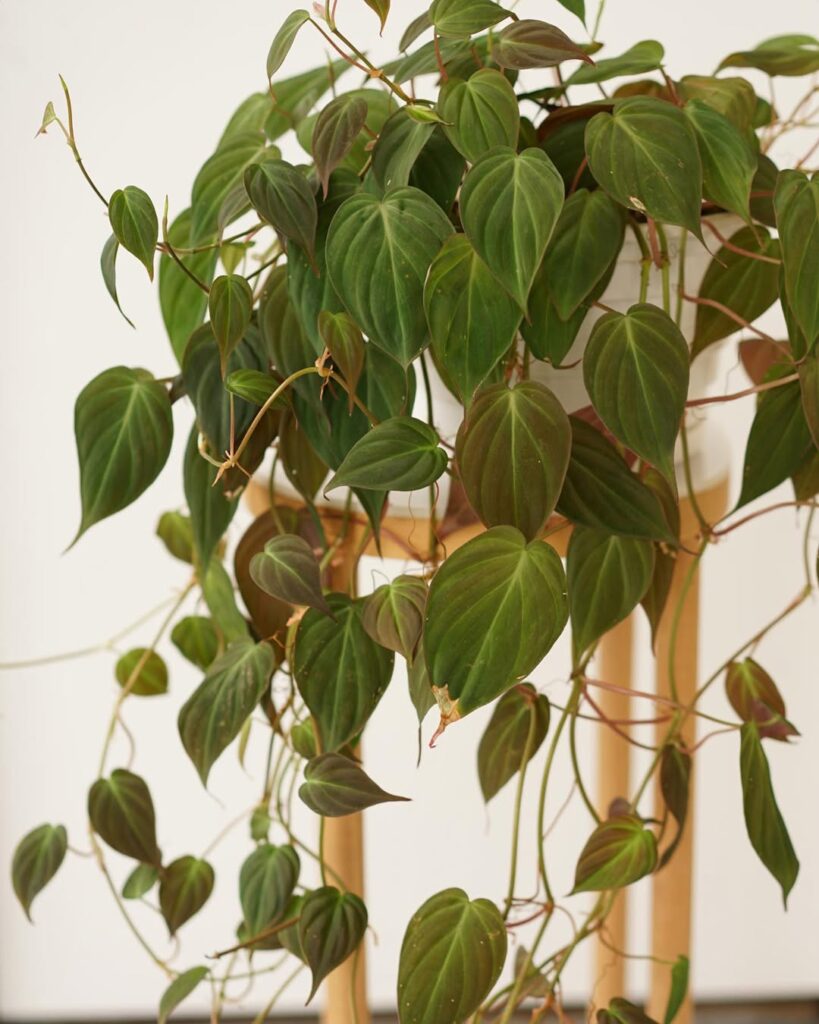
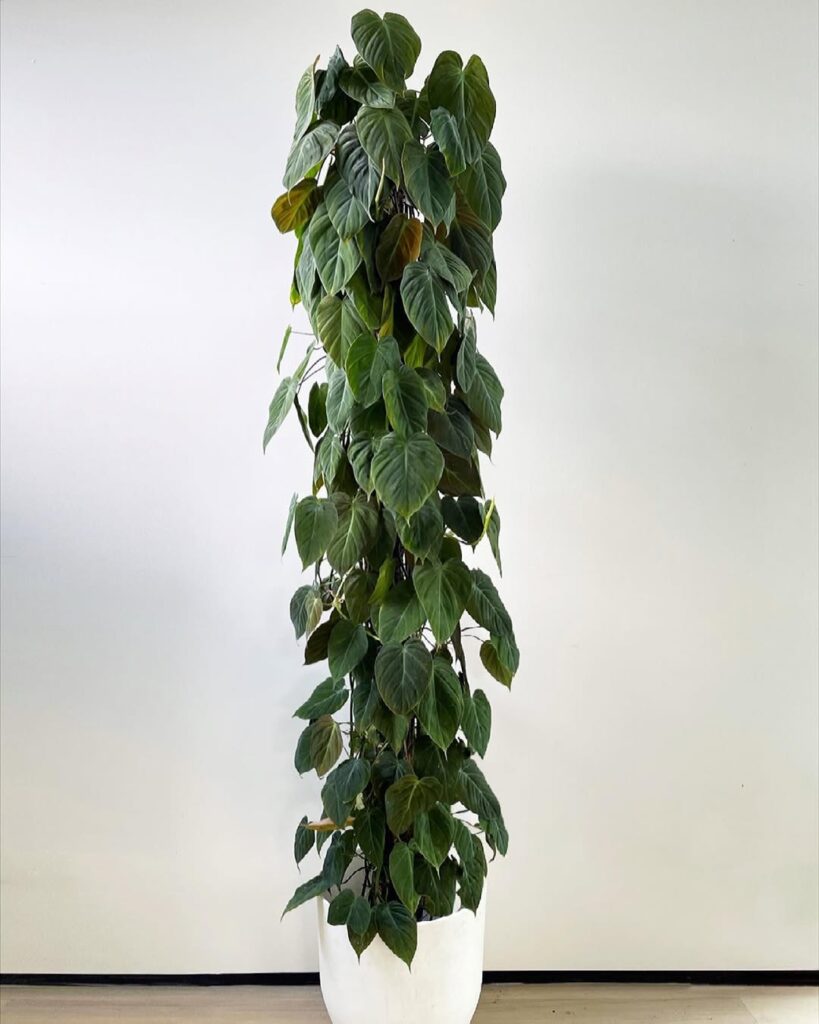
Known for its velvety, deep green leaves with a hint of bronze, Micans is a unique climbing Philodendron that thrives in warm, humid conditions.
- Light: Bright indirect light enhances its velvety texture.
- Watering: Keep soil evenly moist but not soggy.
- Growth Habit: Can trail or climb, reaching 6 feet or more indoors.
4. Philodendron Silver Sword (Philodendron hastatum)
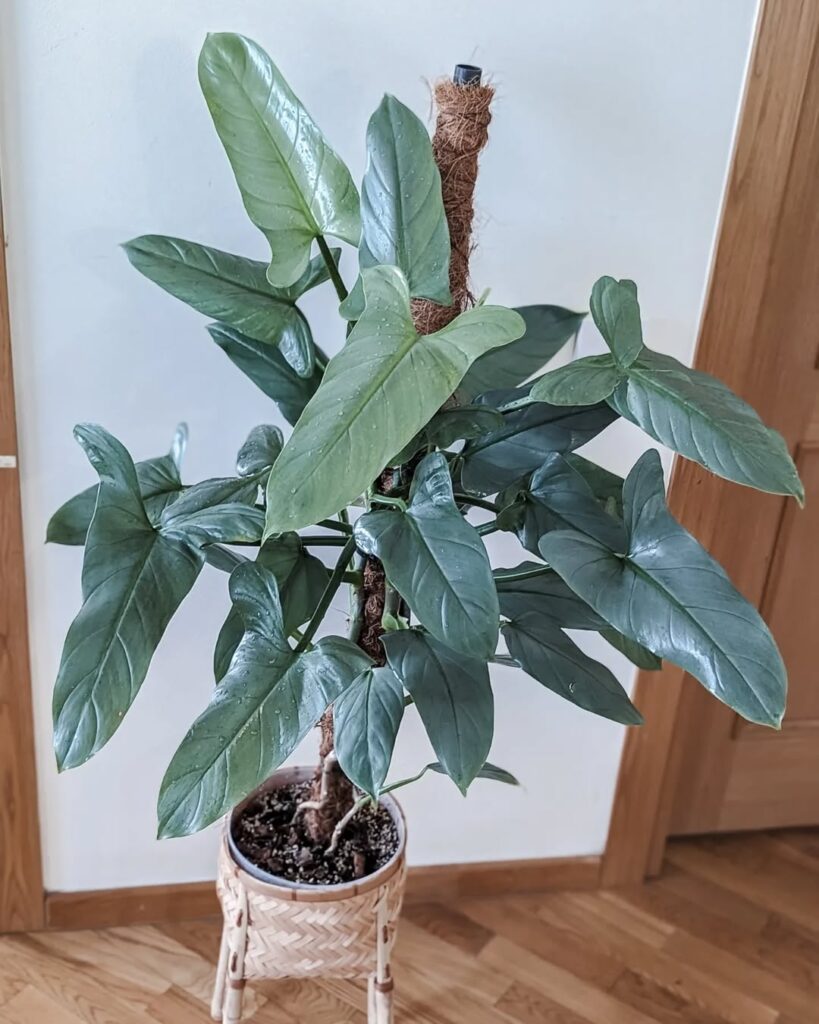
With silvery-blue leaves, Silver Sword is a striking climbing Philodendron that develops elongated, sword-like foliage as it matures.
- Light: Bright indirect light promotes strong growth.
- Watering: Prefers slightly moist soil with good drainage.
- Growth Habit: Climbs vigorously when supported by a moss pole.
5. Philodendron Brandtianum
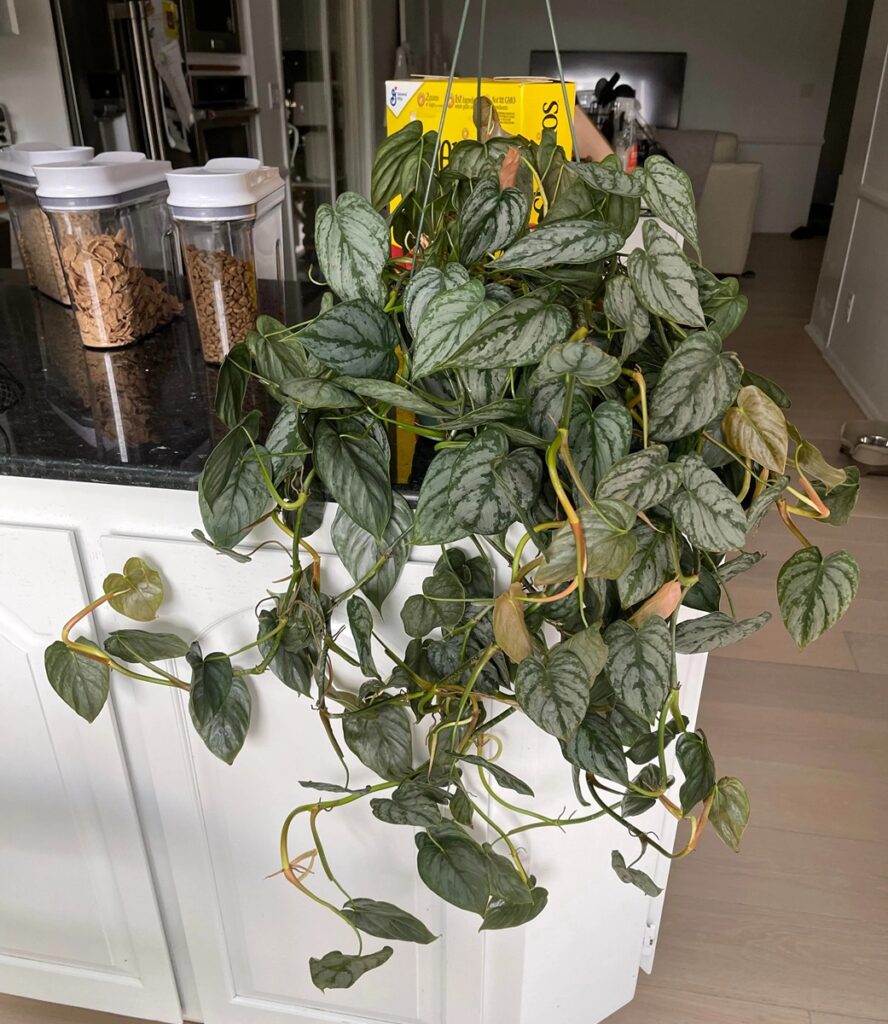
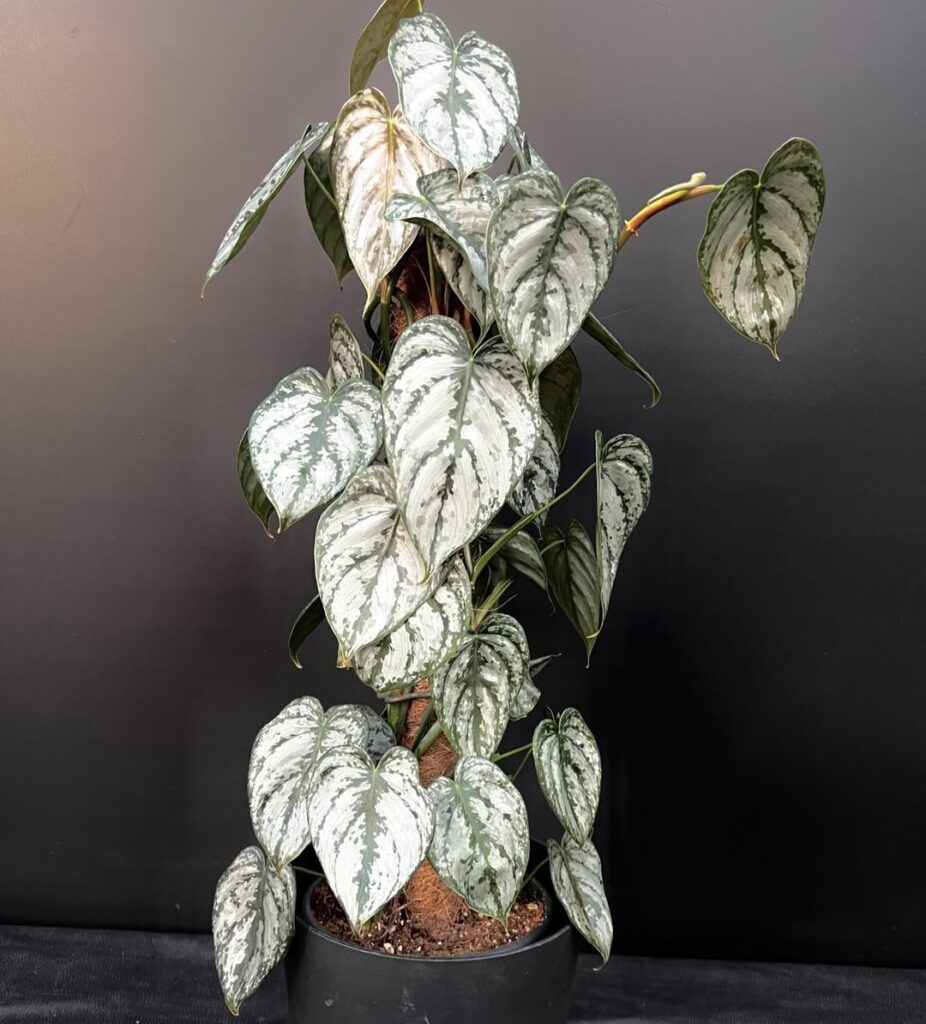
This silver-variegated Philodendron features olive-green leaves with silvery bands, creating a shimmering effect. It’s a fast-growing climber that thrives in humid conditions.
- Light: Medium to bright indirect light.
- Watering: Keep soil slightly damp but avoid waterlogging.
- Growth Habit: Can be trained to climb or trail beautifully.
6. Philodendron Mayoi
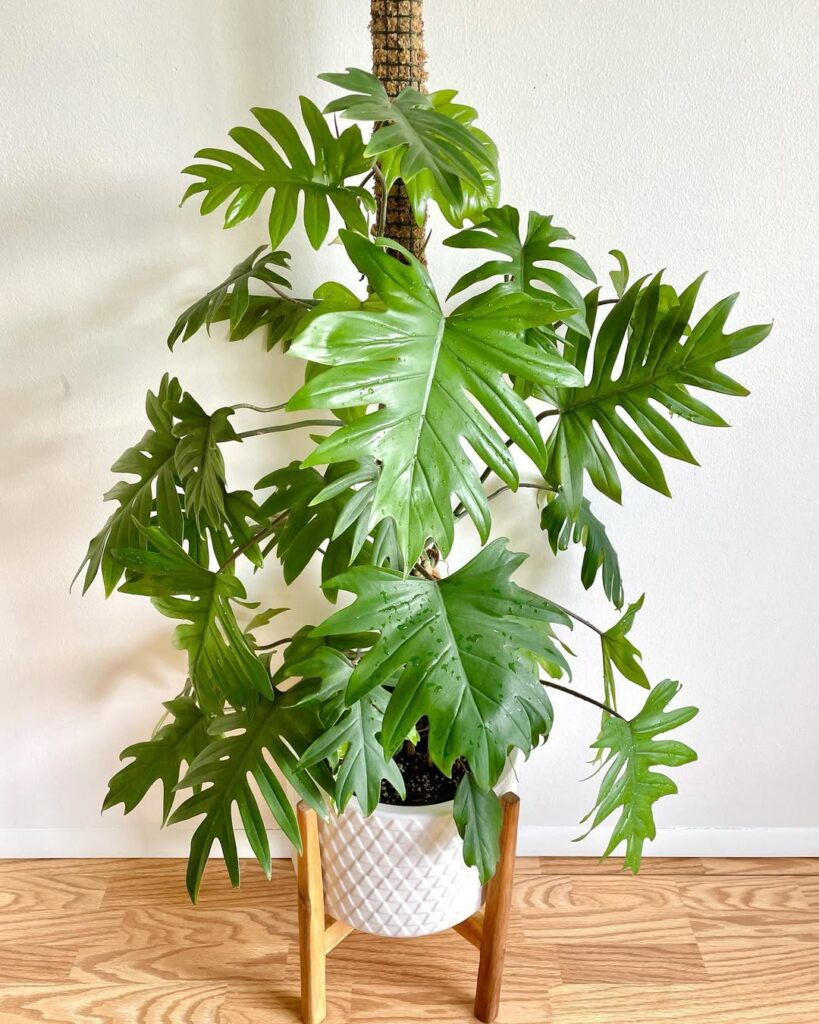
With palm-like leaves and a reddish underside, Mayoi is a rare climbing Philodendron that adds a tropical touch to indoor spaces.
- Light: Prefers bright indirect light.
- Watering: Water when the topsoil feels dry.
- Growth Habit: Climbs well with support, developing large, lobed leaves.
7. Philodendron Lemon Lime
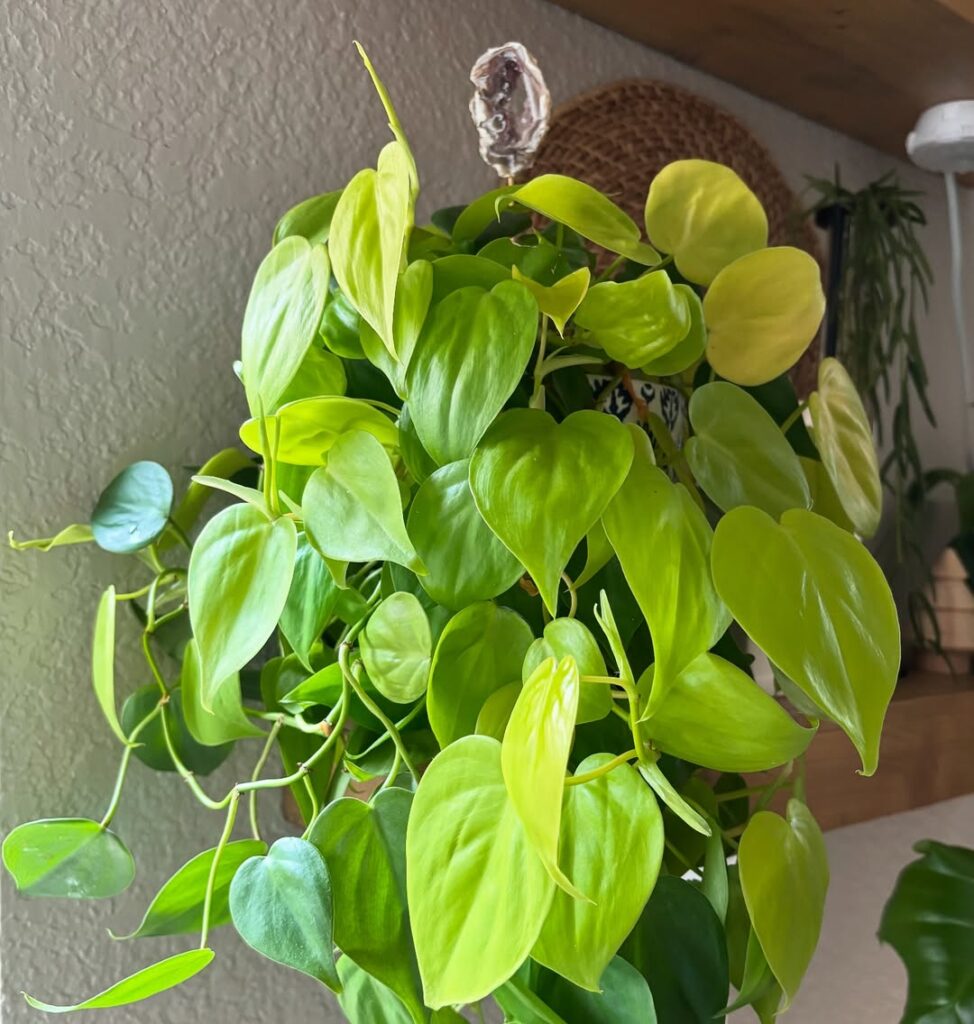
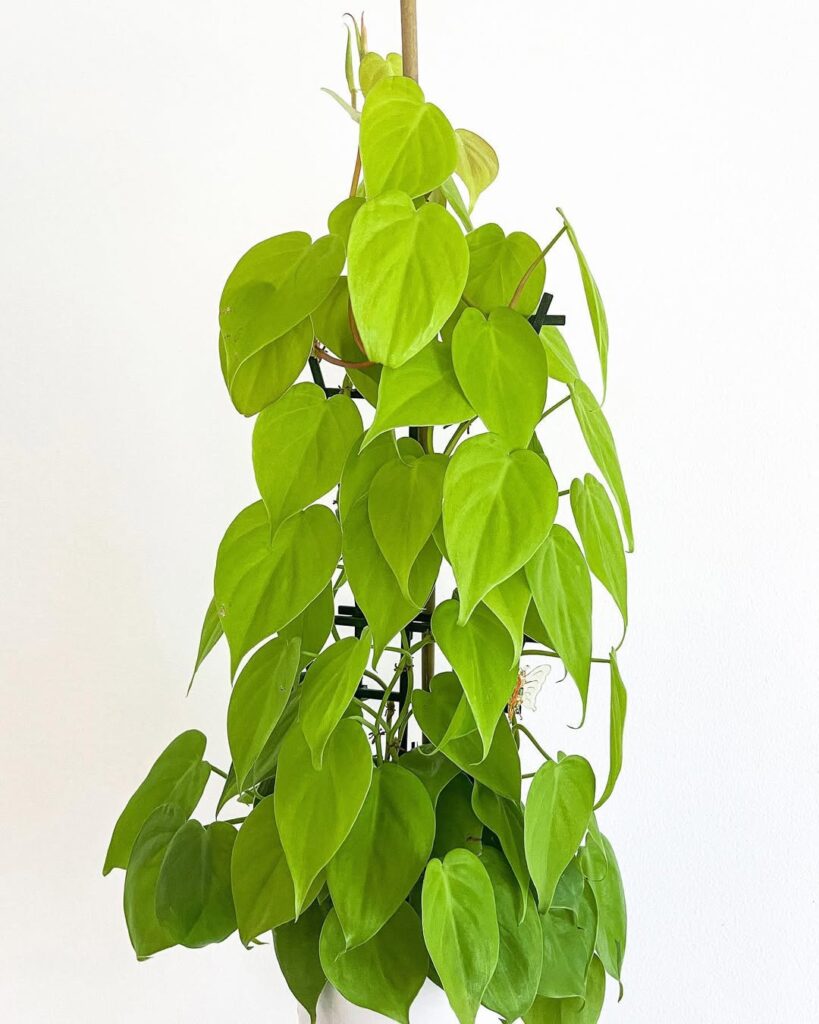
A bright and cheerful variety, Lemon Lime features neon-green foliage that cascades beautifully over planters or climbs up trellises.
- Light: Thrives in bright indirect light.
- Watering: Keep soil moderately moist.
- Growth Habit: Fast-growing, trailing up to 6 feet indoors.
8. Philodendron Pink Princess
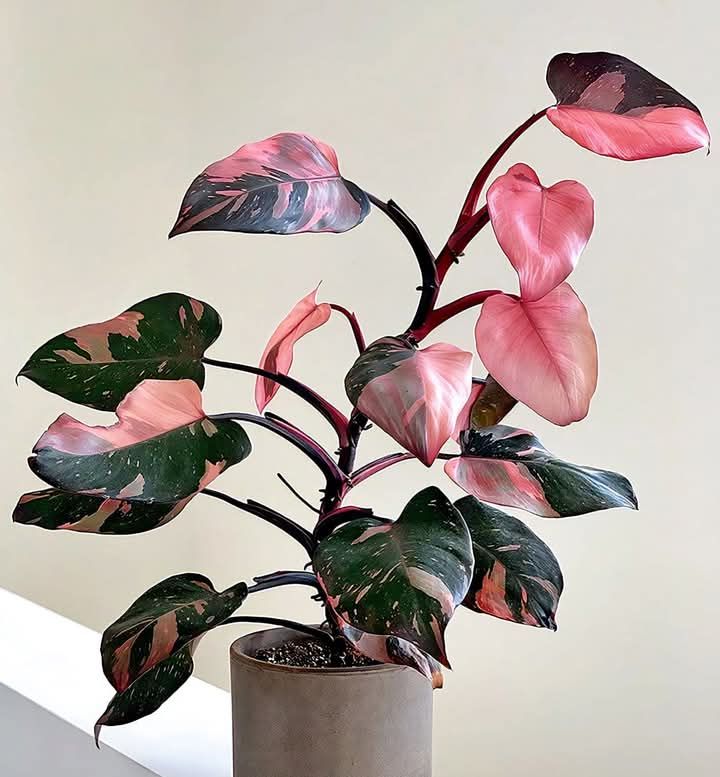
A collector’s favorite, Pink Princess boasts deep green leaves splashed with pink variegation. It’s a slow grower but thrives when given climbing support.
- Light: Bright indirect light enhances variegation.
- Watering: Allow soil to dry slightly between waterings.
- Growth Habit: Climbs steadily with proper care.
9. Philodendron Red-Emerald
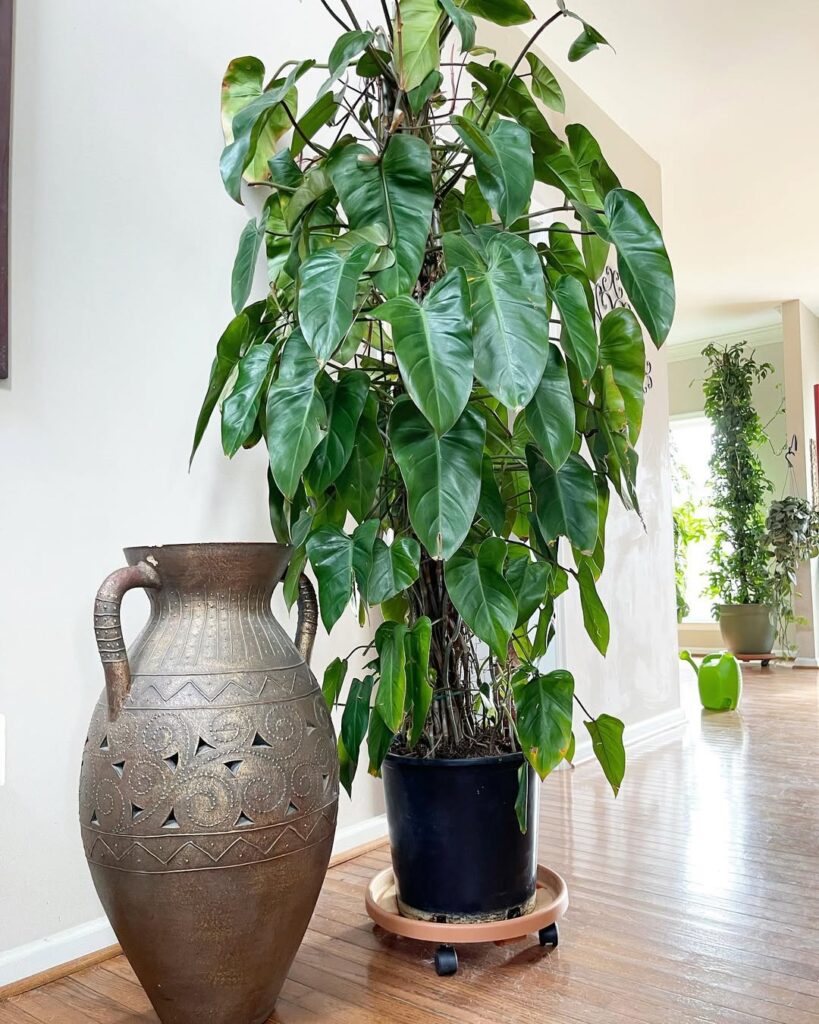
With deep red stems and glossy green leaves, Red-Emerald is a fast-growing climber that thrives in warm, humid environments.
- Light: Prefers medium to bright indirect light.
- Watering: Keep soil evenly moist.
- Growth Habit: Climbs aggressively when trained on a moss pole.
10. Philodendron Cordatum
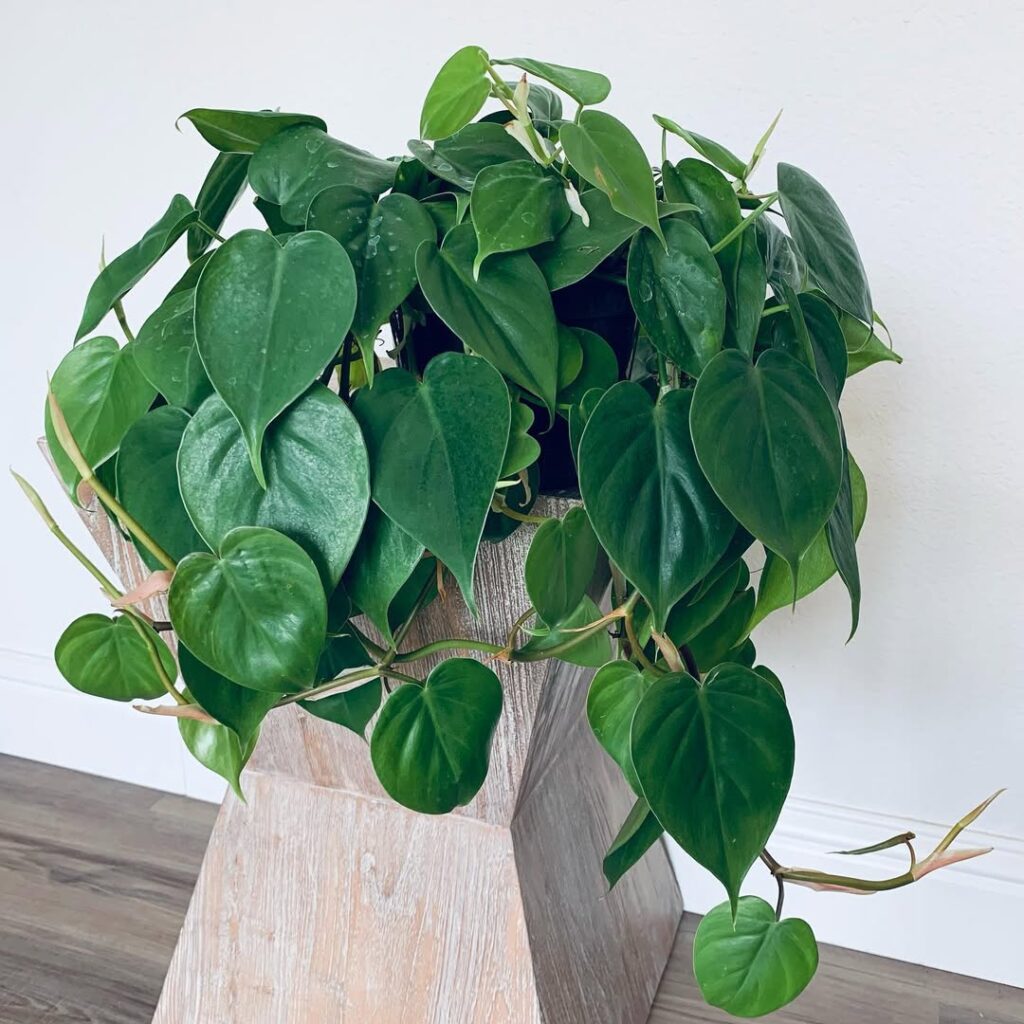
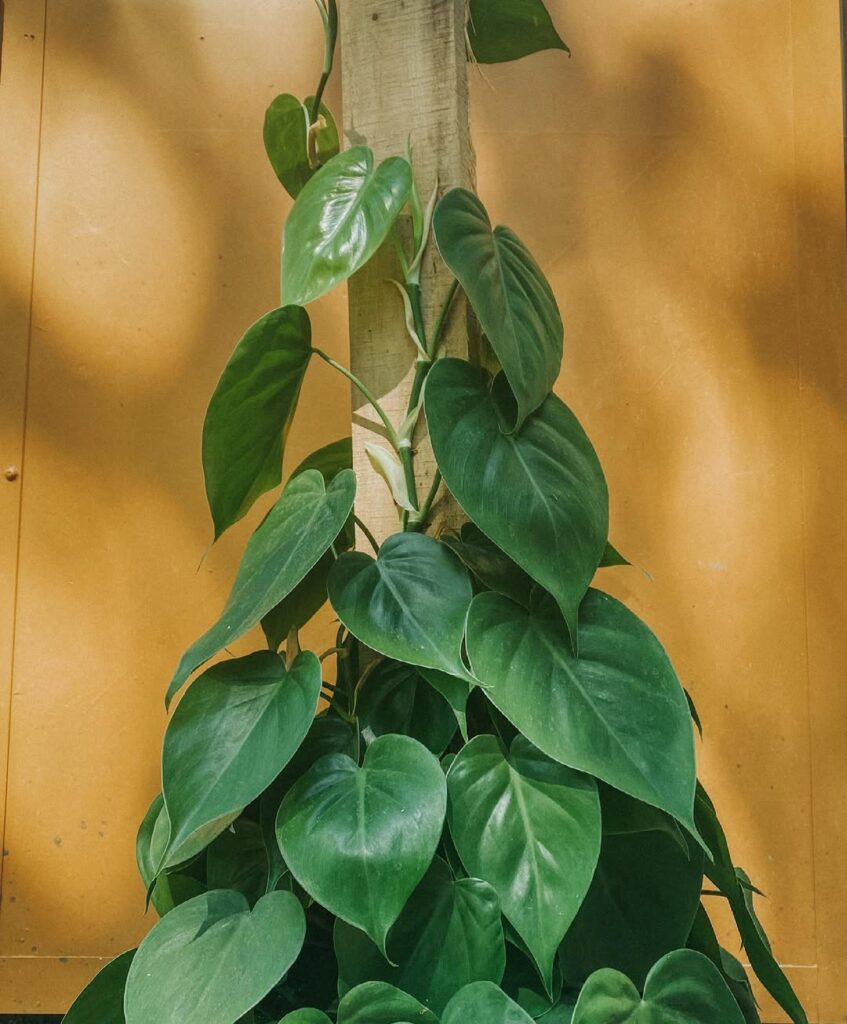
A classic trailing Philodendron, Cordatum showcases emerald-green, heart-shaped leaves that develop on long, cascading vines. Often confused with Philodendron hederaceum, Cordatum has slightly larger, darker green leaves with a smoother texture, while Hederaceum tends to have glossier, lighter green foliage that appears bronze when new.
- Light: Thrives in bright indirect light, though it adapts well to low and medium light conditions.
- Watering: Prefers consistently moist soil, but should not be waterlogged.
- Growth Habit: Can trail elegantly over shelves or climb up trellises when supported, reaching several feet long indoors.
11. Philodendron Green Emerald
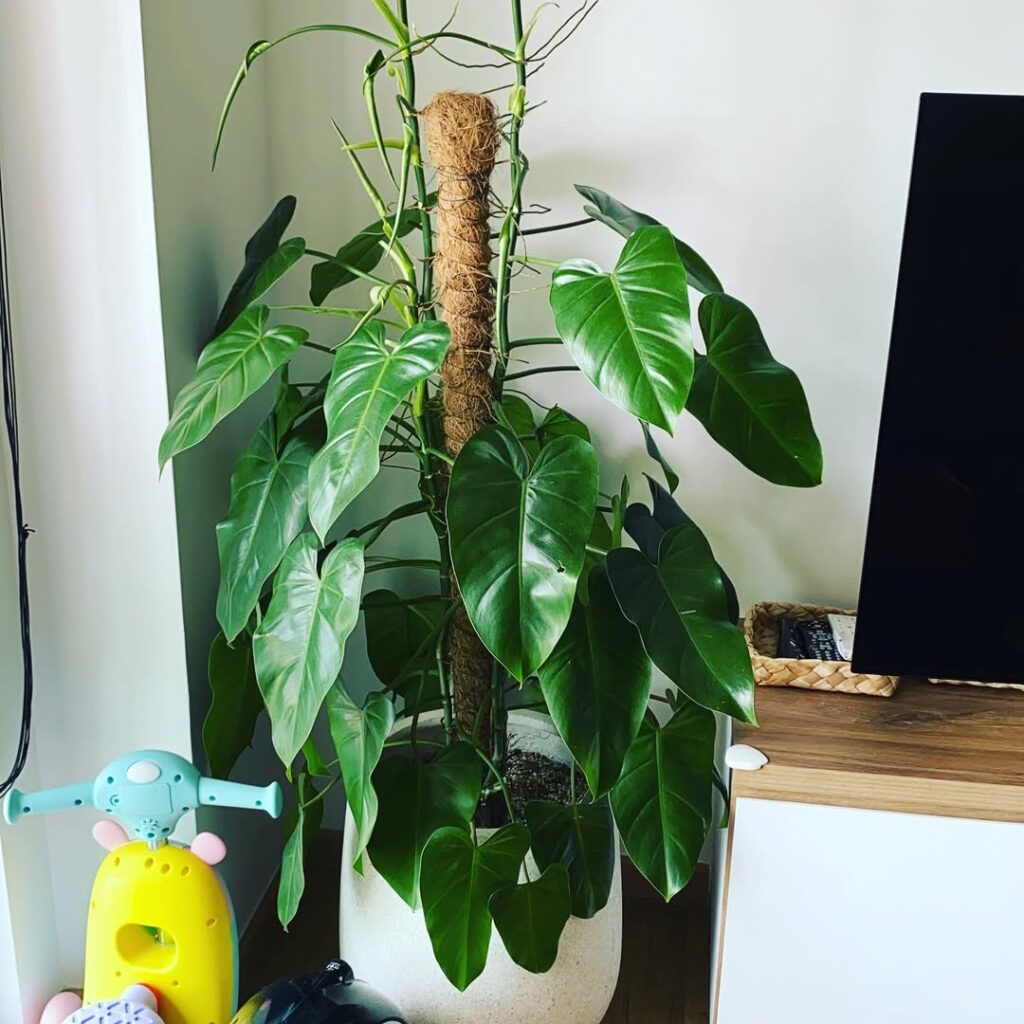
A classic climbing Philodendron, Green Emerald has large, glossy leaves that develop a deep green hue as they mature.
- Light: Thrives in bright indirect light.
- Watering: Keep soil slightly damp.
- Growth Habit: Climbs vigorously when given a trellis or moss pole.
12. Philodendron Painted Lady
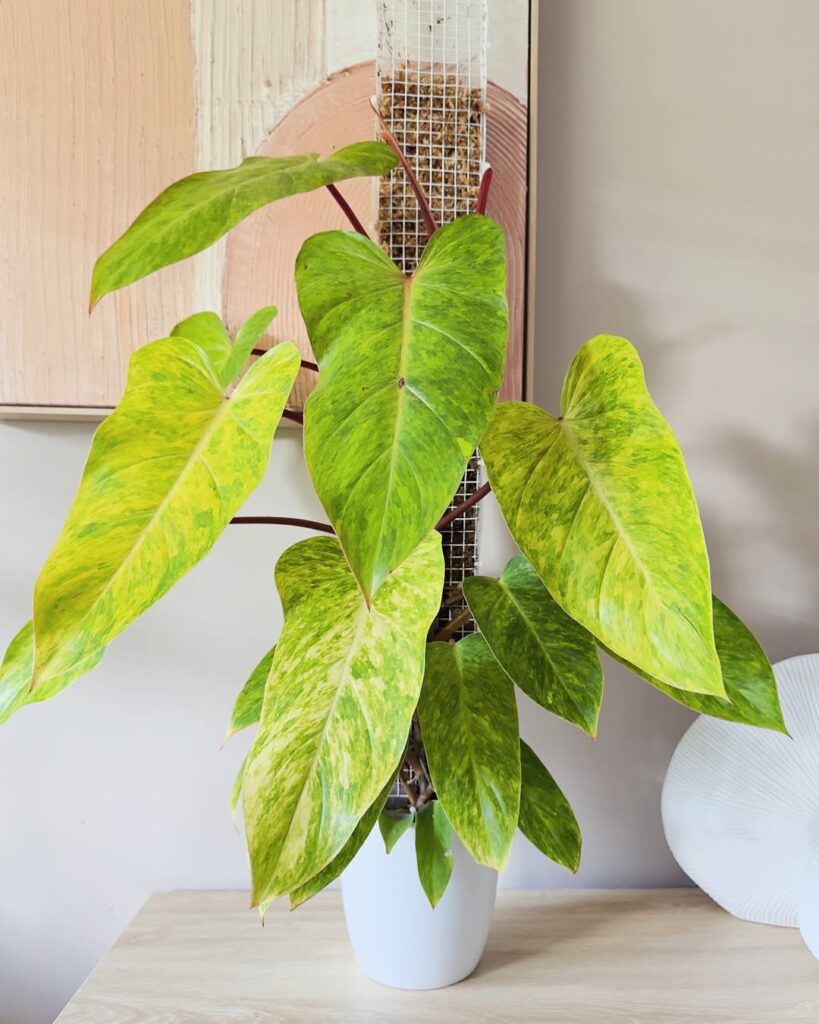
With yellow-green variegation and pink stems, Painted Lady is a stunning climber that adds a pop of color to indoor spaces.
- Light: Bright indirect light enhances variegation.
- Watering: Allow soil to dry slightly between waterings.
- Growth Habit: Climbs beautifully with proper support.
13. Philodendron Bob Cee
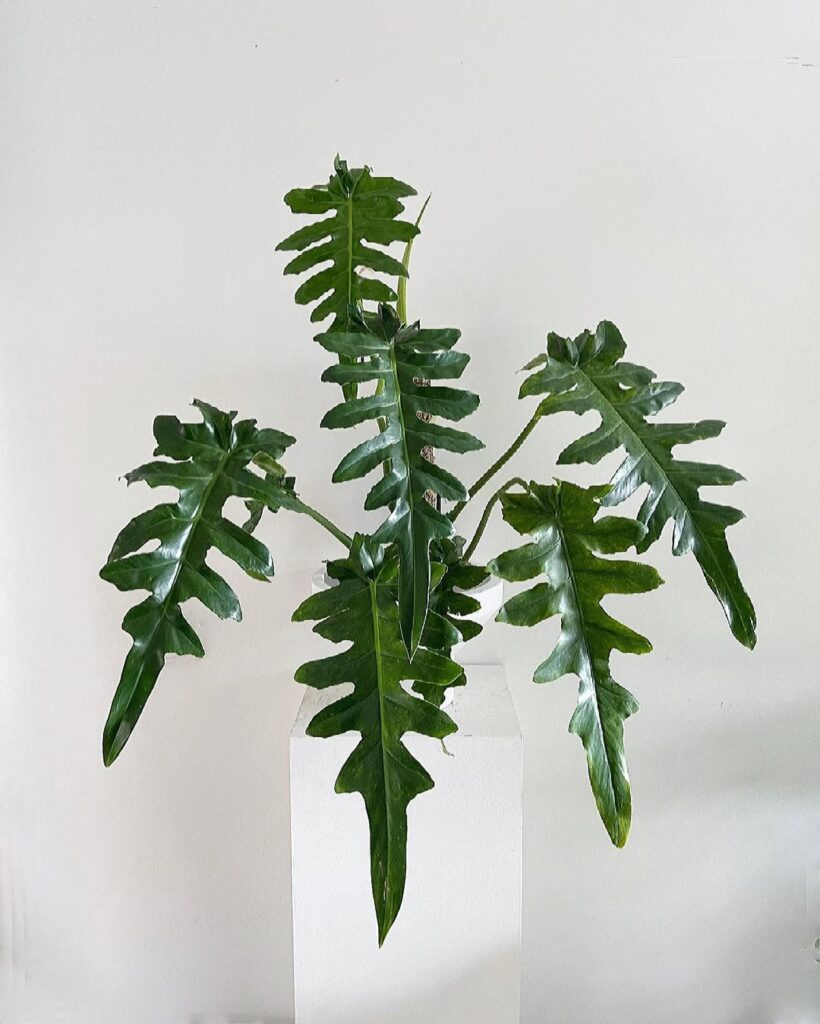
A rare and unique climber, Bob Cee features deeply lobed leaves that develop a dramatic, tropical appearance.
- Light: Prefers bright indirect light.
- Watering: Keep soil moderately moist.
- Growth Habit: Climbs aggressively when trained on a support.
14. Philodendron Lacerum
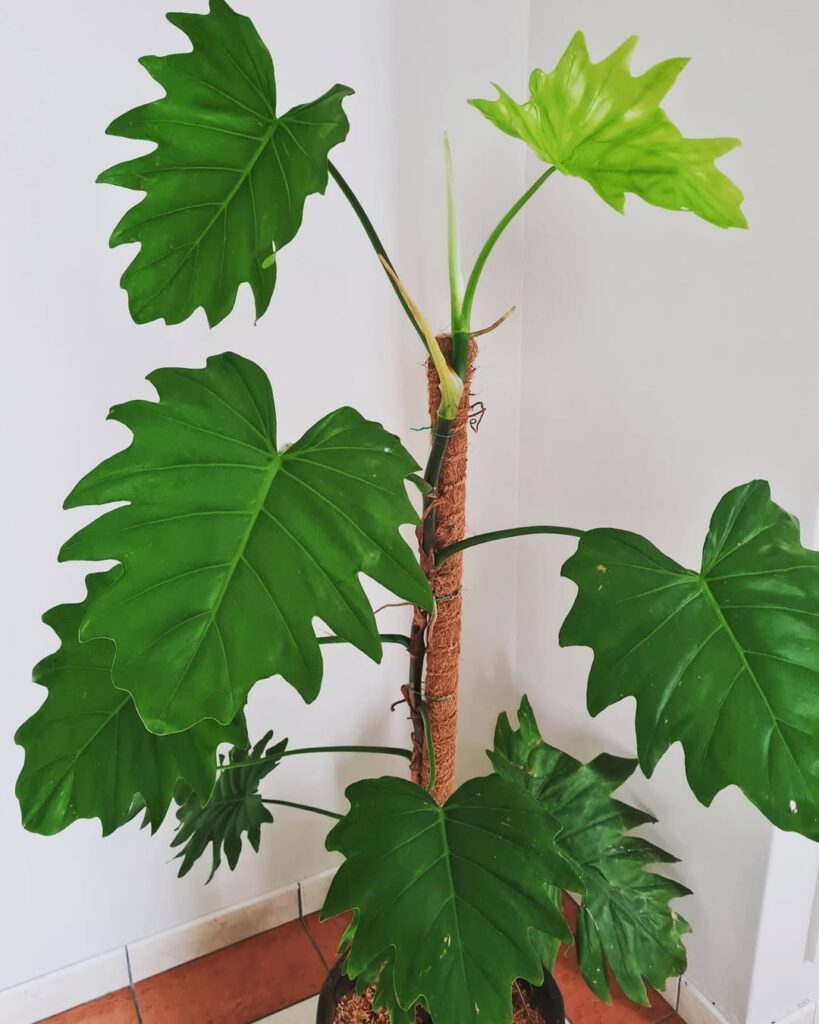
With large, deeply cut leaves, Lacerum is a fast-growing climber that thrives in humid conditions.
- Light: Medium to bright indirect light.
- Watering: Prefers consistent moisture.
- Growth Habit: Climbs steadily with proper care.
15. Philodendron Cream Splash
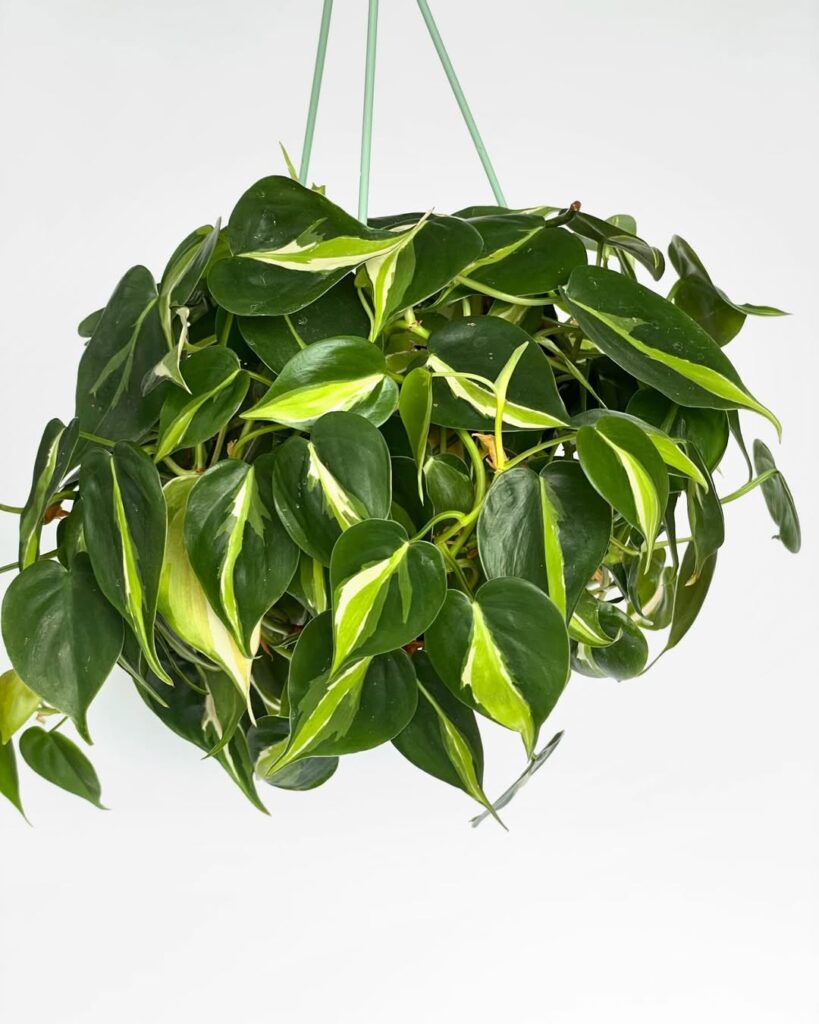
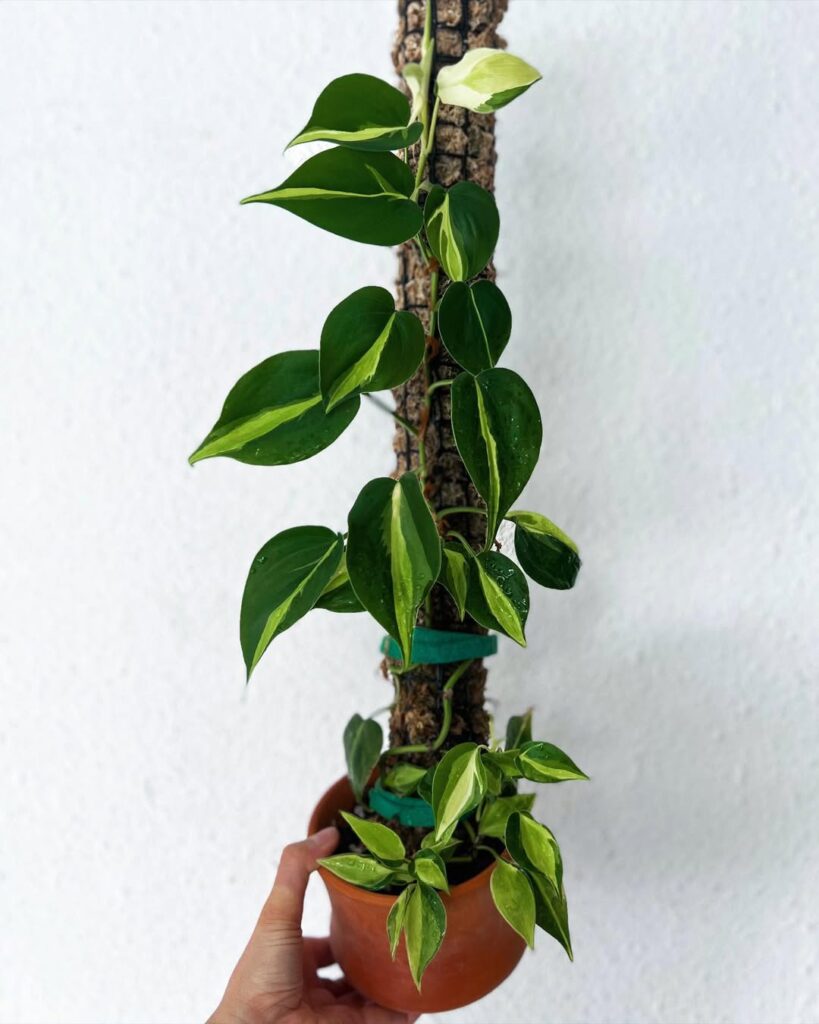
A stunning variegated variety, Cream Splash features green, yellow, and cream-streaked leaves that develop on long trailing vines. It’s fast-growing and thrives in hanging baskets or climbs when given proper support.
- Light: Prefers bright indirect light, but can tolerate medium light levels.
- Watering: Keep soil moderately moist, allowing the top layer to dry between waterings.
- Growth Habit: Trails elegantly or climbs when trained on a trellis or moss pole, reaching several feet indoors.
Care Tips for Climbing Philodendrons
These vining Philodendrons require proper support and care to thrive indoors. Here’s how to keep them healthy:
- Support: Use moss poles, trellises, or hanging baskets to encourage climbing.
- Light: Most prefer bright indirect light, though some tolerate lower levels.
- Watering: Keep soil moderately moist, but avoid overwatering.
- Humidity: A moderate to high humidity level ensures lush foliage.
- Pruning: Trim leggy vines to encourage bushier growth.
How to Propagate Climbing Philodendrons
Climbing Philodendrons are easy to propagate using stem cuttings, which can develop roots in water or soil. Follow these steps for successful propagation:
Step 1: Select a Healthy Cutting
Choose a healthy stem with at least one node—the small bump from which roots will grow. Ensure the stem has several leaves to support growth.
Step 2: Make a Clean Cut
Using sterile shears, cut the stem just below the node to encourage strong root development. A cutting of 4–6 inches works best for propagation.
Step 3: Choose a Propagation Method
- Water Method: Place the cutting in a jar of filtered water, ensuring the node is submerged. Change the water every few days to prevent bacterial buildup.
- Sphagnum Moss Method: Nestle the cutting into moist sphagnum moss, keeping humidity high.
- Soil Method: Plant the cutting directly into well-draining soil, ensuring the node is covered.
Step 4: Encourage Root Growth
Place the cutting in bright, indirect light and maintain warm temperatures (20–25°C / 68–77°F). If propagating in moss or soil, mist the cutting regularly to boost humidity.
Step 5: Transplanting into Soil
After 2–4 weeks, once roots grow to about two inches long, transplant the cutting into a pot with a well-draining mix. Water gently and continue providing indirect light.
Step 6: Provide Post-Propagation Care
Keep the young plant moist but not waterlogged, ensuring it adjusts to soil conditions. Regular misting and warmth will help it transition smoothly.
